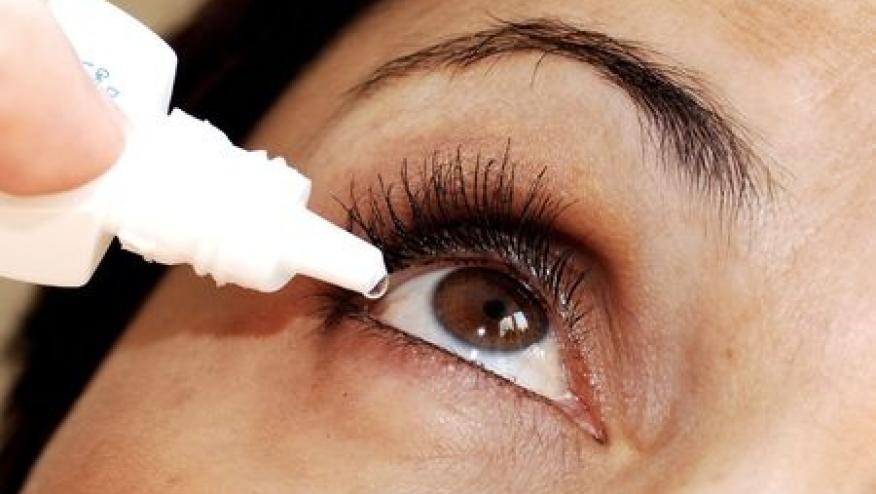Ethnicity Matters in Sjogren's Syndrome Save

Among the ethnically diverse residents of Manhattan, certain groups had markedly different incidence rates of primary Sjogren's syndrome, a retrospective study found.
Women were more often affected, with age-adjusted incidence rates being highest for Asian women, at 10.5 (95% CI 6.6-15.7) per 100,000 person-years, according to Peter M. Izmirly, MD, of New York University School of Medicine in New York City, and colleagues.
For white women, the age-adjusted incidence rate was 6.2 (95% CI 4.7-7.9) per 100,000, while for black women the rate was 3.3 (95% CI 1.5-6.3) per 100,000, and for Latinas it was 3.2 (95% CI 1.8-5.2) per 100,000, the researchers reported online in Arthritis Care & Research.
Sjogren's syndrome is a systemic autoimmune disorder characterized by lymphocytic infiltration of the exocrine glands and multi-organ system involvement. Few data have been available estimating the incidence and prevalence of the disease, especially among minority groups.
To address this gap, Izmirly and colleagues analyzed data from the Manhattan Lupus Surveillance Program, which was established by the New York City Department of Health and Mental Hygiene and the NYU School of Medicine. This program has been collecting information since 2010 on systemic lupus erythematosus and other related autoimmune conditions, including Sjogren's syndrome, which often overlaps with lupus.
The surveillance period was 2007 to 2009, and data were collected from rheumatologists, other clinicians, hospitals, and death registries.
The primary case definition for primary Sjogren's syndrome was documentation of the diagnosis by any physician. Secondary, more restrictive case definitions included diagnosis by a rheumatologist and documentation according to the American College of Rheumatology/European League Against Rheumatism (ACR/EULAR) criteria.
The possibility of case under-ascertainment was addressed using capture-recapture analytic methods.
The population of Manhattan in 2010 was 1,585,873, with 48% being white, 25% being Latino, 13% being black, and 11% being Asian.
During the years 2007 to 2009, there were 138 incident cases of physician-diagnosed Sjogren's syndrome among adult residents of Manhattan, with 84 cases having been diagnosed by a rheumatologist, for overall age-adjusted incidence rates of 3.4 (95% CI 2.9-4) and 3.5 (95% CI 2.9-4.1) per 100,000 person-years, respectively.
Among women, the age-adjusted incidence rate was 5.7 (95% CI 4.7-6.7) per 100,000, while among men the rate was 1 (95% CI 0.6-1.5) per 100,000 (P<0.001).
The capture-recapture analysis added 167 incident cases, suggesting that at least 17% of cases had been missed. This raised the adjusted incidence rate to 4.1 (95% CI 2.5-5.8) per 100,000 person-years.
Mean age at the time of diagnosis was 52.7 for women and 58.1 for men. Among the ethnic groups, mean ages at diagnosis were 56 for Latinos, 54.7 for whites, 48.6 for blacks, and 47.4 for Asians.
For prevalence, the overall age-adjusted rate was 13.1 (95% CI 11.1-15.1) per 100,000 person-years. As with incidence, prevalence was approximately six times higher among women, while the prevalence rates according to ethnicity were 23.8 per 100,000 among white women, 23.7 for Asians, 16.1 for blacks, and 15 among Latinas.
Capture-recapture added 24 cases, suggesting that 13% of cases might have been missed.
Using the more stringent ACR/EULAR criteria that require documentation of dry eyes or mouth plus the presence of autoantibodies, the age-adjusted incidence and prevalence rates were 1.1 (95% CI 0.8-1.5) and 3.3 (95% CI 2.4-4.4) per 100,000 person-years, respectively.
While the analysis specifically provided rate estimates for Manhattan, the city's ethnic diversity "also provided epidemiologic estimates for the major racial/ethnic populations in the U.S.," Izmirly and colleagues observed.
A limitation of the study was the lack of information on ethnic subgroups, with Latino and Asian groups encompassing a variety of heterogeneous populations that could differ in Sjogren's syndrome incidence and prevalence. "Given the already limited number of published studies on primary Sjogren's syndrome among Asians and Latinos, additional work is needed to better describe and understand the epidemiology of primary Sjogren's syndrome among specific ethnic subpopulations," the authors wrote.
The study was funded by the CDC and the New York City Department of Health and Mental Hygiene.








If you are a health practitioner, you may Login/Register to comment.
Due to the nature of these comment forums, only health practitioners are allowed to comment at this time.